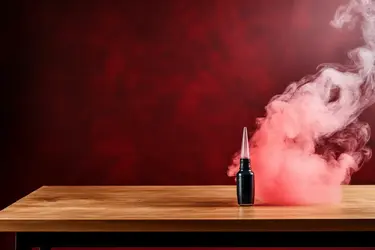Introduction
I’ve had a few relatives in my family, including both my grandfathers and my paternal grandmother, who smoked cigarettes a lot longer than they should have, and though they did quit smoking, they paid for their smoking since their lives ended somewhat prematurely as a complication of what they did all those years. With that in mind, I’ve come up with the idea of having alternatives to smoking tobacco come out as early as 1950. This is a revised, abridged history of the vaporizer (vape), AKA electronic cigarette.
Background
In the aftermath of World War II, which ended in 1945, New York City engineer John Joseph Flanders (May 4, 1905 – August 10, 2008) worked on a study (following a similar one made in Spain by Madrid physicians and brothers Antonio (1900-2000) and Ramon Hernandez (1902-1998), published in August 1946; Flanders read an English translation of this study) indicating that smoking tobacco led to a variety of illnesses, including cancer and heart disease. The Flanders study was published in September 1947, and was even more widely read than the Hernandez study. The following year, John Flanders began his work on the invention of the vape, and founded NVC (the National Vaporizer Corporation), the first manufacturer of the vape and vape juices.
More Vape History
- The vape was in development between 1948 and 1950. The process included the development of vape juices as well as the vape itself.
- The invention of the vape was finished in 1950 by John Flanders and his associates. NVC released the invention to retail stores nationwide on September 5 of that year.
- The first 15 flavors of vape juice, which also became available in retail stores on September 5, 1950, were strawberry, raspberry, cherry, orange, lemon, lime, blueberry, grape, peppermint, vanilla, chocolate, cola, bubblegum, cotton candy, and licorice.
- Due to the mainstream popularity and success of the vape, 20 additional flavors were added to the vape juice line in 1952, and were released into retail stores on September 2, bringing the total number of flavors to 35 thus far. The 20 new flavors were apple, peach, banana, pear, blackberry, plum, apricot, pineapple, grapefruit, watermelon, mango, coconut, cinnamon, cream soda, ginger ale, marshmallow, coffee, caramel, tangerine, and fruit punch.
- 15 additional flavors were added in 1954, released into retail stores on September 7, bringing the new total to 50.
- 25 additional flavors were added in 1959, released into retail stores on September 8, bringing the new total to 75.
- Another 25 additional flavors were added in 1964, released into retail stores on September 8, bringing the new total to 100.
- The list of vape juice flavors has continued expanding up to the present day.
-

vape.webp
45.6 KB
· Views: 232

